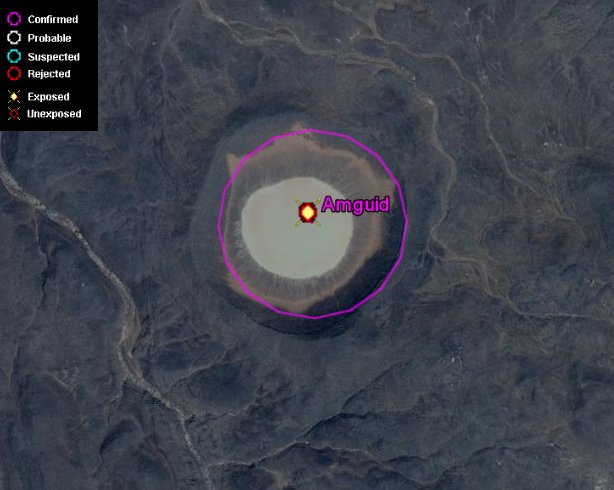
Спутниковая фотография из Google Earth.

Кратер "Амгид" (Марчук и др., 2005)
Amguid is located in southwestern Algeria. Amguid formed in lower Devonian sandstones, and has a diameter of 450m. These sandstones dip outward within the crater walls, and become progressively steeper in the upper parts of the wall. On the northwest side of the rim, the sandstone beds have been overturned, and these beds dip gently in the northeast part of the rim. The top of the rim seems to be covered by blocks of sandstones that are several meters in diameter, and form a nearly continuous debris blanket 100m from the rim. The center of the crater is flat, and is filled by compacted eolian silts. The crater walls do not have visible breccia veins or shatter cones Despite this, planar deformation features were discovered in some quartz grains. Intense deformation was also visible in some of the grains, as well as fracturing. The fact that planar deformation features are observed so rarely at Amguid are probably a result of the crater's formation in sandstones, and of lower pressures that occur in the formation of small craters. The age of Amguid is not well understood; the target rocks constrain the age to somewhere between the present and ~350 million years, but studies of the erosion of the crater suggest an age of 10,000-100,000 years.
Global Impact Studies Project

Спутниковая фотография из Google Earth.

Кратер "Амгид" (Марчук и др., 2005)